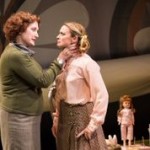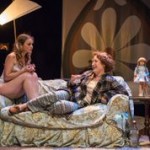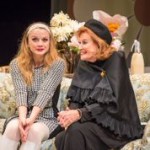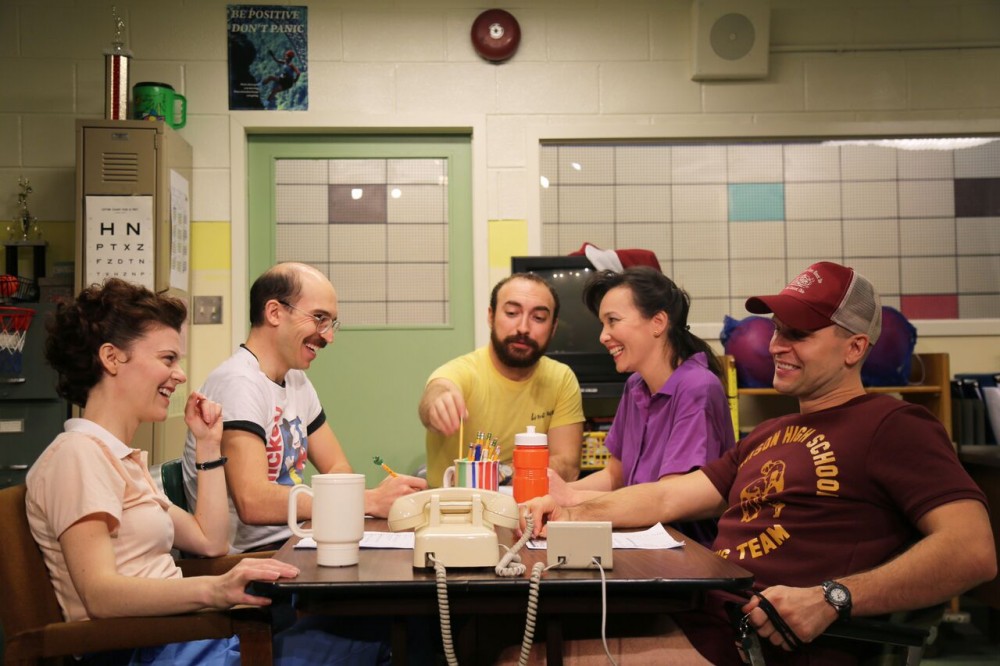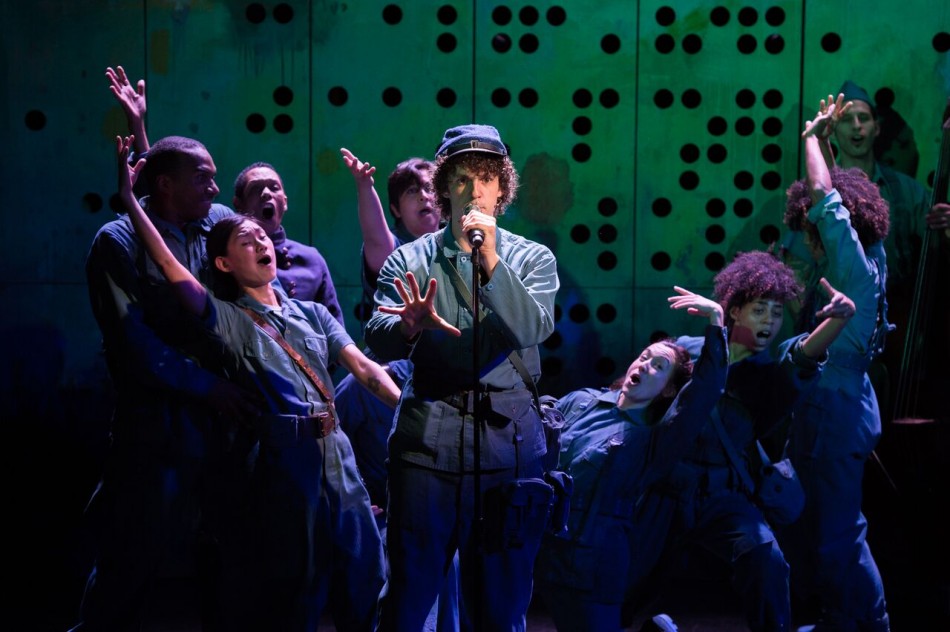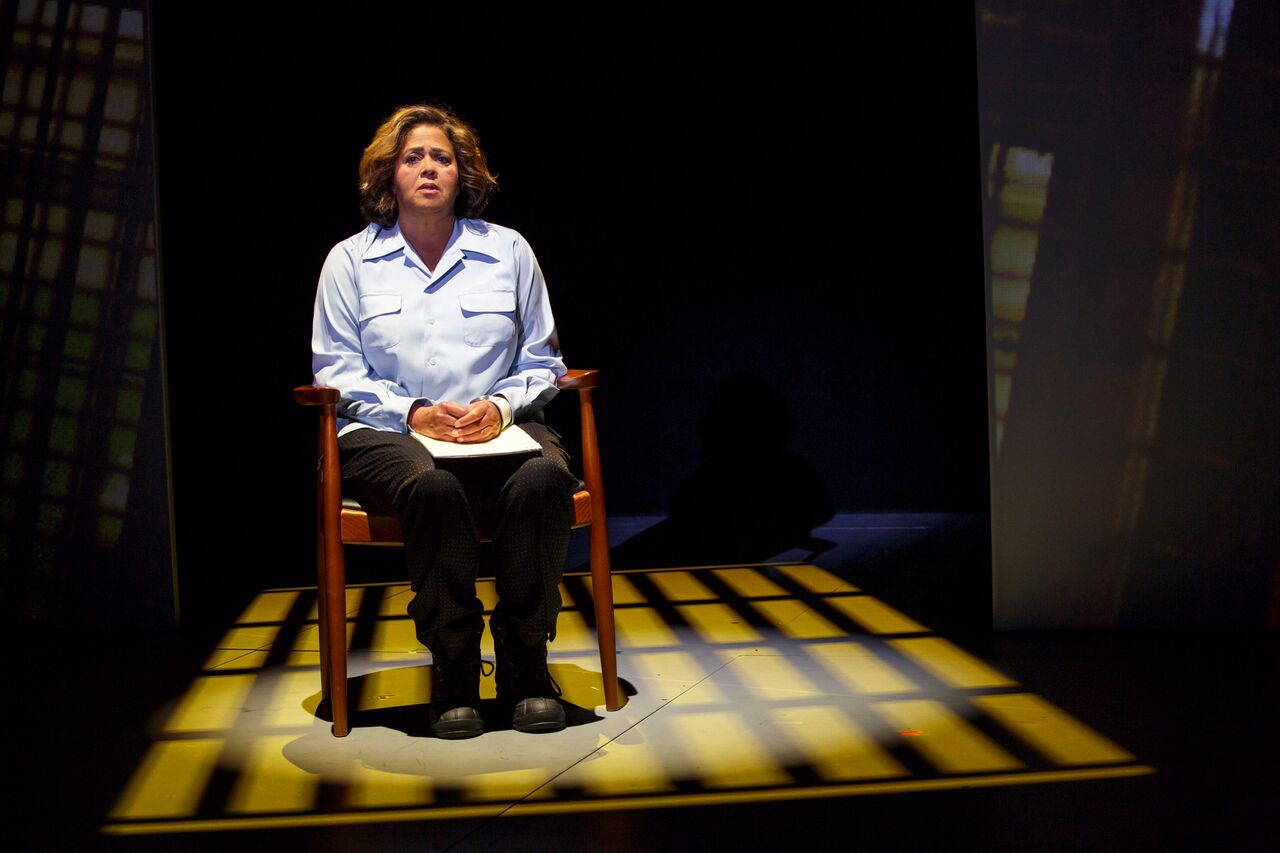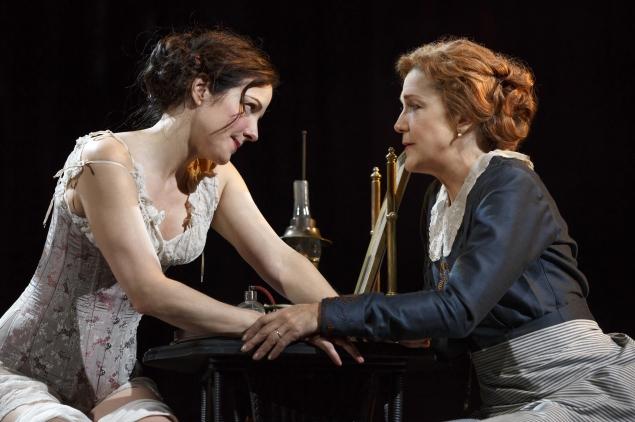NY Theater Review: JK Clarke
Poor June.You would think life would be rosy. The radio show she stars in, Applehurst, is the most popular in the country, and her character, Sister George, is the most popular on the show; she has a good community of friends who adore her; and she lives with her lover, a babyish little blond who has a massive collection of Victorian dolls arranged about the house. But, as anyone in show business knows, you’re only as good as your last performance. Your fortunes could change in a blink of an eye. And it is this reality that has kept June on edge for quite some time now.
In The Killing of Sister George, a revival of Frank Marcus’s 1965 multiple prize-winning play,—now being presented by The Actors Company Theater (TACT) on Theater Row at the Beckett Theatre—June (Caitlin O’Connell) hates her co-workers and fears her character, Nurse George, might be killed off in order to boost ratings. Her paranoia has led her to excessive drinking, which causes her to bully and brawl with anyone in sight . . . including a pair of nuns in a taxicab.
Originally produced in 1965 when radio plays were a major part of everyday life, The Killing of Sister George is now something of a timepiece, and its subject matter has evolved into a more humorous examination of a bygone era, despite some rather serious moments. That everyone’s favorite radio character was a butch lesbian who routinely dominated and abused her babydoll lipstick girlfriend, “Childie” (Margot White), surely was scandalous when the play came out, though it’s a relatively meaningless issue today. More interesting is Childie’s growth throughout the story. Helpless and meek initially, White deftly moves her character into a more assertive and driven role by play’s end; her transformation is remarkable, yet believable and likeable. When June/George ultimately does get killed off the show, we see the personality flaws only glimpsed earlier come rushing out in a storm. Childie sees it too, and grabs the first opportunity to get out.
Despite the onstage charisma between White and O’Connell being stiff and stilted at the beginning of the play, the acting on the whole is delightful, particularly the wonderful Cynthia Harris as Mrs. Mercy Croft (an elegant Grande Dame who’s both a radio show host and a sort of agent of the BBC), and Dana Smith-Croll as Madame Xenia, the upstairs gypsy psychic with bobbed cotton-candy pink hair that matches a house gown of the exact same hue. Smith-Croll’s commentary on the action, punctuated with a disgusted “Oy!” is practically a catchphrase by show’s end. Narelle Sissons’ extraordinary costume and set design (including monstrously over-large light fixtures, rugs and extension cords) tie the whole performance perfectly together, giving it the period-piece flavor it requires.
There are also touches in the play engineered by director Drew Barr that move it from passable to quite enjoyable, particularly White and O’Connell’s spot-on and mighty funny Laurel and Hardy routine to start out the second act, which sets a far more entertaining tone for the rest of the show. The Killing of Sister George is a lark: a fun play with some issues that were more serious at the time it originally ran than today, so that now it’s an interesting historical document and a study of four very compelling characters.
The Killing of Sister George. Through November 1 at the Beckett Theater, Theater Row (410 West 42nd at Ninth Avenue). www.tactnyc.org




